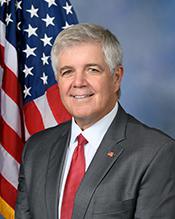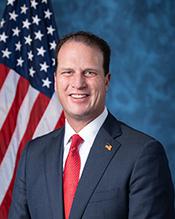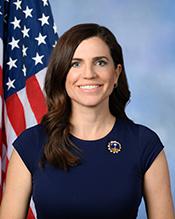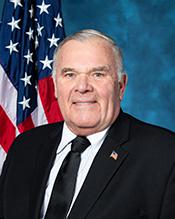0
0
0
Safe Social Media Act
2/5/2024, 2:30 PM
Summary of Bill HR 4826
The Safe Social Media Act, also known as Bill 118 hr 4826, is a piece of legislation introduced in the US Congress aimed at regulating social media platforms to protect users from harmful content and misinformation. The bill seeks to hold social media companies accountable for the content posted on their platforms and to ensure the safety and well-being of users, particularly children and teenagers.
Key provisions of the Safe Social Media Act include requiring social media companies to implement measures to prevent the spread of harmful content, such as misinformation, hate speech, and cyberbullying. The bill also mandates that platforms provide users with tools to report and block harmful content, as well as mechanisms for appealing content moderation decisions.
Additionally, the Safe Social Media Act requires social media companies to disclose their content moderation policies and practices, as well as any algorithms used to recommend or promote content to users. This transparency is intended to increase accountability and trust in social media platforms. Overall, the Safe Social Media Act aims to create a safer and more responsible online environment for users, particularly vulnerable populations such as children and teenagers. By regulating social media companies and holding them accountable for the content on their platforms, the bill seeks to address the growing concerns surrounding the impact of social media on mental health, privacy, and democracy.
Key provisions of the Safe Social Media Act include requiring social media companies to implement measures to prevent the spread of harmful content, such as misinformation, hate speech, and cyberbullying. The bill also mandates that platforms provide users with tools to report and block harmful content, as well as mechanisms for appealing content moderation decisions.
Additionally, the Safe Social Media Act requires social media companies to disclose their content moderation policies and practices, as well as any algorithms used to recommend or promote content to users. This transparency is intended to increase accountability and trust in social media platforms. Overall, the Safe Social Media Act aims to create a safer and more responsible online environment for users, particularly vulnerable populations such as children and teenagers. By regulating social media companies and holding them accountable for the content on their platforms, the bill seeks to address the growing concerns surrounding the impact of social media on mental health, privacy, and democracy.
Congressional Summary of HR 4826
Safe Social Media Act
This bill requires a study on the use of social media platforms among individuals under age 18. A social media platform is a public-facing website, internet application, or mobile internet application (e.g., social network, search engine, or email service) with at least 30 million active monthly users in the United States.
The Federal Trade Commission must coordinate with the Centers for Disease Control and Prevention to carry out the study, and the study must address matters such as frequency of usage, mental health effects linked to such usage, and policy recommendations.
Read the Full Bill
Current Status of Bill HR 4826
Bill HR 4826 is currently in the status of Bill Introduced since July 24, 2023. Bill HR 4826 was introduced during Congress 118 and was introduced to the House on July 24, 2023. Bill HR 4826's most recent activity was Referred to the Subcommittee on Innovation, Data, and Commerce. as of July 28, 2023
Bipartisan Support of Bill HR 4826
Total Number of Sponsors
1Democrat Sponsors
0Republican Sponsors
1Unaffiliated Sponsors
0Total Number of Cosponsors
8Democrat Cosponsors
0Republican Cosponsors
8Unaffiliated Cosponsors
0Policy Area and Potential Impact of Bill HR 4826
Primary Policy Focus
Science, Technology, CommunicationsAlternate Title(s) of Bill HR 4826
Safe Social Media Act
Safe Social Media Act
To require the Federal Trade Commission to conduct a study regarding social media use by teenagers.
Comments
Sponsors and Cosponsors of HR 4826
Latest Bills
Providing amounts for the expenses of the Committee on Ethics in the One Hundred Nineteenth Congress.
Bill HRES 131December 12, 2025
Providing for congressional disapproval under chapter 8 of title 5, United States Code, of the rule submitted by the Bureau of Land Management relating to "Central Yukon Record of Decision and Approved Resource Management Plan".
Bill HJRES 106December 12, 2025
Expressing the sense of the House of Representatives in condemning the Government of the People's Republic of China for its harassment and efforts to intimidate American citizens and other individuals on United States soil with the goal of suppressing speech and narratives the People's Republic of China finds unwelcome.
Bill HRES 130December 12, 2025
Providing for congressional disapproval under chapter 8 of title 5, United States Code, of the rule submitted by the Bureau of Land Management relating to "North Dakota Field Office Record of Decision and Approved Resource Management Plan".
Bill HJRES 105December 12, 2025
Providing for congressional disapproval under chapter 8 of title 5, United States Code, of the rule submitted by the Bureau of Land Management relating to "Miles City Field Office Record of Decision and Approved Resource Management Plan Amendment".
Bill HJRES 104December 12, 2025
Providing amounts for the expenses of the Select Committee on the Strategic Competition Between the United States and the Chinese Communist Party in the One Hundred Nineteenth Congress.
Bill HRES 104December 12, 2025
Critical Access for Veterans Care Act
Bill S 1868December 12, 2025
OATH Act of 2025
Bill S 1665December 12, 2025
A bill to extend the authority for modifications to the Second Division Memorial in the District of Columbia.
Bill S 1353December 12, 2025
Saving Our Veterans Lives Act of 2025
Bill S 926December 12, 2025
Safe Social Media Act
Bill S 687December 15, 2023




